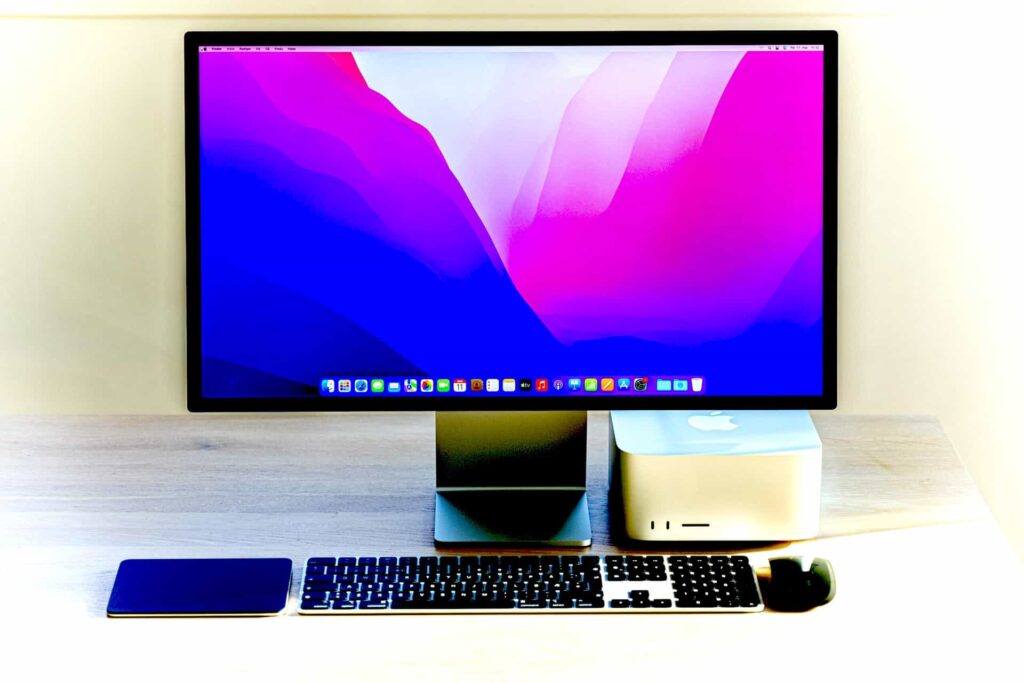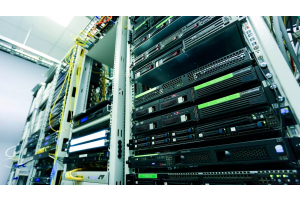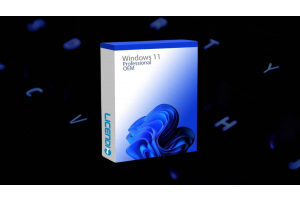The new Mac Studio from Apple: Everything you need to know

A new computer was unveiled at Apple's spring Peek Performance event this year. The Mac Studio appeared in the form of a large Mac Mini and revealed specifications that looked powerful. Along with the launch of the Mac Studio, a new 5K 60hz computer display, the Studio Display, was unveiled.
The question many are asking is: "Where does it fit in Apple's product range - is it a kind of Pro Mac Mini or more of a Mini Mac Pro?". The answer is: "Why not both?".
With the Mac Studio available now, it makes sense to take a look at the Apple Mac Studio and Studio Display specs and see how they can improve your life (or not?).
How do they compare to Apple's previous hardware, and how do they stand out from the crowd of desktop options? Here's everything you need to know about Apple's new Mac Studio, Studio Display and more.
Save energy and computer time
If you are interested in a Mac, you have to compare apples to apples. The Mac Studio is available in four configurations. What you should spend your money on depends on what you have in mind. The low-end Mac Studio can do almost everything the high-end MacBook Pro can. The high-end Macbook Pro is a little more powerful, but the second-generation Mac Studio outperforms the MBP's specs.
That's an important statement, because this laptop is a real beast that outperforms many modern desktops. If you need something much more powerful and opt for the more powerful and expensive Mac Studio configuration, you are dealing with a monster as a computer.
Apple has used a bridge called UltraFusion to connect two M1 Max chips and essentially make them act as a single chip. The M1 Ultra Mac Studio more than doubles the performance of the MacBook Pro, which in turn doubles the performance of the original M1 Mac.
When comparing the rendering time of a 15-minute video on the MBP i7 and the Mac Studio, the Mac Studio was about 5.9 times faster, which is really incredible.
Mac Studio makes it easy to get into an "editing flow". This allows you to work much more efficiently and over longer periods of time. An edit that used to take me three hours now only takes me one hour. It's really crazy, especially when you think about how much time you save over the course of a year.
Design and ports

How big is it really? At first glance, the Mac Studio looks like two Mac Minis and a half stacked on top of each other. A metaphorical Big Mac against the Mac Mini's cheeseburger with Mac sauce. This machine is both bigger and smaller than you might expect. It's bigger when you look at it next to the Studio Display.
In most promotional photos you only see the front of the device under the screen, when you have it directly in front of you it looks a bit bigger.
It is even so big that the sound from the speakers is affected when you place the device under the screen.
When the Mac Studio is under the display, the sound is bounced around in the computer and changes the sound profile of the unit. For this reason, I would never recommend placing the Mac Studio under the Studio Display.
It makes more sense to compare the Mac Studio to a full-blown PC because it looks much smaller. It is similar in size to a GameCube and smaller than Intel's NUC 12 Extreme. That's impressive when you consider that you can easily move it from one room to another when needed.
The Mac Studio has ports on the front and back. On the back are four Thunderbolt 4 ports, a 10GB Ethernet port, two USB-A ports, an HDMI port and a headphone jack. On the front are two USB-C or Thunderbolt 4 (depending on the configuration) and an SDXC slot.
The Mac Studio looks overall friendly and (dare I say it) cute, but it also feels industrial, professional and wrapped in aluminium.
Screen
It's a beautiful display that shares the design language of many Apple devices with large screens before it. The Studio Display is a 27-inch Retina display (5K, 60 Hz) with an integrated 12MP ultra-wide-angle camera that enables Centre Stage.
It has three USB-C ports and a Thunderbolt 3 port that supports 96W charging. This means you can connect your MacBook Pro to this port and charge it via the display.
The Studio Display also includes three microphones for crystal clear sound and 6 speakers with 4 force-cancelling woofers and two tweeters.
It can be configured with a VESA mount or with one of two types of mounts: one that supports tilt and one that supports tilt and height adjustment for an extra €400.

The glass can be standard or nano-textured, which adds light diffusion at an extra €300. The whole thing is powered by an A13 Bionic chip. I can only tell the difference between this and the Pro Display XDR on paper because I don't have XDR, but I have an iMac 2021 and a Macbook Pro at hand.
The Studio Display is thicker than the iMac 2021, which is thinner than an Apple Watch", but acceptable given the improvements in speakers and display quality over that computer.
Prices for the Studio Display start at €1600, which is significantly cheaper than the €4500 Pro Display XDR. The XDR is capable of reproducing HDR content and has a contrast of 1M:1 as opposed to the Studio which has a contrast of 1,200:1. The XDR is a 6K display while the Studio is a 5K display. They are similar displays, but there is no one that is "better" for all scenarios.
Universal control
Universal Control is a new feature that allows a user who owns multiple Apple devices (iPads, Mac Book Pro, Mac Pro, etc.) to control these devices with a single mouse and keyboard. This is ideal if you have a laptop or iPad that you use on the go but want to share files seamlessly between multiple devices.
For example, if you have a picture on your iPad, you can drag it to your Mac Studio desktop. You could have done this with AirDrop, but it's much smoother with Universal Control.
It is not really a second screen function. If you want to use your iPad as a second screen, you can use the Sidecar function. Universal Control is something completely different that can open up the possibilities of a flexible workflow. At least if you have two computers side by side, it can help reduce the number of keyboards and mice you use.
This is ideal if you have one main computer for work and a second computer for rendering or other more complicated workflows. It's still in beta, so it's not perfect yet, but I have a feeling that this feature, if developed further, will significantly improve portability and working with multiple devices. This could help eliminate some of the problems associated with having a desktop in a mobile world.
Who is this computer for?
This computer is for designers, photographers, musicians, creatives, animators, programmers and artists of all kinds. It is very powerful. Nobody makes an Apple device obsolete faster than Apple itself, and you could see that during the keynote.
Throughout Apple's Mac Studio presentation, it was glassy-eyed to notice that in each of the comparisons, Apple was dragging its own 27″ iMac Pro into the mud, which is conspicuously outside the current line-up.
It's easy to assume that this machine is meant to replace that product line. The iMac Pro was a good middle ground for people who needed something more powerful than an iMac or MBP, but not as powerful as a Mac Pro.

The Mac Studio fills this niche and even offers some advantages over an all-in-one device. By decoupling the computer and the screen, the screen has a lifespan beyond that of the computer, and the user can buy components as needed.
In this sense, all that glitters is not gold. Like the current iMac and Mac Mini, this Mac Studio comes in a non-upgradeable configuration that does not allow the user to change the internal components themselves.
For a large part of the population, this is fine, as many people do not have the ability or desire to replace their computer parts. For those who, like me, want this option, there is always the Mac Pro, an easily upgradable device at a much higher price, starting at €5,999. It is not for nothing that the Mac Pro is the last device in Apple's product range that has not yet been given the Apple Silicon treatment.
If you are considering the Mac Pro, I would wait for an Apple Silicon version of this computer. For a smaller form factor with interchangeable components, there are many powerful PC options, such as Intel's NUC 12 Extreme.
Price
The "low-end" configuration starts at €1,999 and includes an Apple M1 Max with 10-core CPU, 24-core GPU, 16-core Neural Engine, 32 gigabytes of Unified Memory and 512GB SSD.
The "high-end" configuration starts at €5,799 and includes an Apple M1 Ultra with 20-core CPU, 64-core GPU, 32-core Neural Engine, up to 128GB of Unified Memory and up to 8TB of SSD storage.
The bottom end of the Mac Studio overlaps with the top end of the MacBook Pro, which has an Apple M1 Max with a 10-core CPU, 32-core GPU, 16-core Neural Engine and 64GB of memory, plus up to 8TB of SSD storage.
Together with the Studio Display, which is available from €1,599, the result is a very expensive device.
These prices seem high, but this is a very fast computer with a small form factor that will meet the needs of a large proportion of professional graphic designers.
Based on my testing with the top-end Macbook Pro, I would say that even the lowest-end Mac Studio is no big deal and meets the needs of many professional users without going completely broke.
Short and sweet
If you need a very fast Mac but don't want the portability of a notebook, the Mac Studio is a great choice. The M1 series offers plenty of power for the creative among us. The Studio Display is a very good monitor.
There are some issues that make it harder to recommend to professionals doing professional video and animation work with specific requirements, but for a photographer, musician or a range of other creative professions that are not mobile, this could be an option.
The lack of 120 Hz and HDR may not make it the ideal monitor for you, but the integrated camera, speakers and microphones could make it a welcome addition to a work environment that requires frequent meetings with Zoom.
The most important thing about this computer is the upcoming launch of the Mac Pro. Each iteration of Apple's silicon in the M1 series has introduced a computer that is twice as powerful as the previous chip design, resulting in a range of computers that work as fast as you'd imagine.
As rendering times approach 0, the creative professional is greeted with an iterative workflow that could not exist before.
The future that Apple is building is fantastic and I can't wait to see what we will be able to do with it as the company realises its limitless potential.
Further information?
Remember, you can always read more about technology and software on our blog.
Write us a comment or give us a call.
Greetings,
Your Licendi team.




